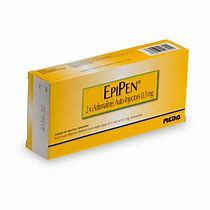Save the Dates!

NCPA Annual Convention
October 6-9
Boston, MA
PFOA creates opportunities to meet with as many of our attending members as possible. If you plan to attend the event listed above, please let us know.
|
|
Welcome New
PFOA Members
Apex Infusion Pharmacy
Signal Hill, CA
Mountain Street Pharmacy
Kings, Mountain, NC
Shelby Drug
Shelby, NC
Dallas Express Pharmacy
Dallas, NC
Morgantown Drug
Morgantown, NC
Pharmedico Pharmacy
Sarasota, FL
Guidepoint Pharmacy #112
Marshall, MN
Medicine Shoppe #2127
Shawneetown, IL
Script Life Pharmacy
Clovis, CA
|
|
Mom and Pop is the Future of Pharmacy
The rise of big box stores and e-commerce is a boost for independent community pharmacy. That's the prediction from marketing researcher Michael Dart, who focuses on how retailers can tap into changing demographics and consumer expectations to boost business.
"When people can buy anywhere, where they buy becomes incredibly important to them," Dart said during a keynote presentation at ThoughtSpot 2018, Good Neighbor Pharmacy's annual trade show. "Increasingly, consumers want local. They want a personal, positive experience with someone who cares about them as an individual. As an independent pharmacy, you have all that, and the big boxes and online sellers don't. Independent pharmacies have an incredible future."
For Good Neighbor Pharmacy, personalized care means looking at the whole patient, not just the prescription. Customers buy prescriptions. Patients expect their pharmacist to help them minimize sickness and optimize wellness-prescriptions are just one element of care.
By Fred Gebhart, from Michael Dart's Keynote address at ThoughtSpot2018
|
|
PFOA Board Election Results
The votes have been tallied and we would like to congratulate Ty Stout of Bakersfield, CA and Gabriel Guijarro of Lufkin TX on their election to the Board.
Eric Pusey of Olyphant PA was reelected to the PFOA Board; John Zuzack was reelected to the PFOA MS Board and Eric Pusey was reelected to the PFOA MC Board.
The Board met via phone conference and the Officers elected are as follows:
President - Todd Pendergraft
Vice President - Doug Coyle
Secretary - Phil Rigsby
Treasurer - Larry McIntosh.
Meet Our New Board Members
Gabriel "Gabe" Guijarro
 Gabe has owned Medicine Shoppe #0939 in Lufkin, Texas since 1988. He has been a PFOA member since Gabe has owned Medicine Shoppe #0939 in Lufkin, Texas since 1988. He has been a PFOA member since
2010.
Gabe's Medicine Shoppe location offers services including immunizations, compounding, medication therapy management, adherence packaging, medication synchronization, health screenings, point of care testing and other clinical services.
Gabe is a member of the Texas Pharmacy Association, American Pharmacists Association, National Community Pharmacy Association and CPESN Texas.
Gabe holds a Bachelor of Science Degree in Physiology from Oklahoma State University as well as his Bachelor of Science Degree in Pharmacy from Southwestern Oklahoma State University.
Gabe and his wife Sherell have four grown children; Marcus, Joseph, Andrew and Alexander. In his leisure time, Gabe enjoys spending time with his family and offshore fishing.
Ty Stout
 Ty Stout has been the owner/operator of el Tejon Pharmacy since 2008. The original location in Bakersfield, CA has served the community since 1928. Ty has grown his company, adding two
additional locations in Bakersfield and Frazier Park. Ty has been a PFOA member since 2015. Ty Stout has been the owner/operator of el Tejon Pharmacy since 2008. The original location in Bakersfield, CA has served the community since 1928. Ty has grown his company, adding two
additional locations in Bakersfield and Frazier Park. Ty has been a PFOA member since 2015.
Ty graduated from Texas Tech University Health Sciences Center with his Doctor of Pharmacy (PharmD). He is a member of the American Pharmacists Association, National Community Pharmacy Association and the California Pharmacists Association.
Ty's pharmacies offer immunizations, diabetic services, prescription disposal, unit dose, compounding and home healthcare.
When he's not at the pharmacy, Ty enjoys attending baseball games, golfing and spending time with his family.
|
|
PFOA
Board of Directors
President:
Todd Pendergraft
todd@bafamilydrug.com
Vice President:
Treasurer:
Larry McIntosh
Larry@PharmaxPharmacy.com
Secretary:
Phil Rigsby
256-536-1910
phillip@huntsvillecompounding.com
Board Members:
Gabriel Guijarro
936-634-3006
grgrph@gmail.com
rprp3@aol.com
Ron Robichaux
bayourx@bellsouth.net
Ty Stout
661-717-1814
tystout@eltejonpharmacy.com
John Zuzack
jdzuzack@gmail.com
Non-Voting Board Members:
Dirk Andrepont
337-948-7703
Gaye Moseman
910-617-8549
Board of Directors
President:
Dirk Andrepont
337-948-7703
Secretary/Treasurer:
John Zuzack
David Cole
610-539-7282
PFOA-MC
Board of Directors
President:
Eric Pusey
Vice President:
Devin Trone
208-571-6434
Secretary/Treasurer:
Bobbie Barbrey
919-345-8736
|
|
PFOA Staff
Contact Information
David Mayper
Executive Director
305-773-5822
DMayper@pfoai.org
Wesley Drake III
National Director of Sales
704-488-0270
WDrake3@pfoai.org
Nancy Coibion
Administrative Assistant
Fax:314-843-5579
Nancy@pfoai.org
Mailing Address
10944-B Gravois Industrial Court
St. Louis, MO 63128
Wesley Behar
West Region Sales
661-904-4939
WBehar@pfoai.org
Wes Drake
Florida Sales
863-944-0747
WDrake@pfoai.org
Karen Godbold
Executive Administrator
407-456-3231
KGodbold@pfoai.org
Ronda Hubbard
Generics Specialist/Sales
407-492-8845
Fax: 270-632-4206
RHubbard@pfoai.org
Al Schuster
Northeast Sales
216-409-6597
ASchuster@pfoai.org
Bob Sutton
Vendor Programs/Mid-West Sales
636-577-7107
BSutton@pfoai.org
Nancy Tataronis
Vendor Relations/Marketing
786-556-0007
NTataronis@pfoai.org
Jamie Wilbanks
Inside Sales/Service
Toll Free: 888-406-7467
JWilbanks@pfoai.org
|
Get Linked In!

Pharmacy Franchisees and Owners Assn
(FPN) Federation of Pharmacy Networks
(NCPDP) National Council for Prescription Drug Programs
(NCPA) National Community Pharmacists Association
(NABP) National Association of
Boards of Pharmacy
(NASPA) National Alliance of State Pharmacy Associations
Pharmacist E-Link
|
|

Our recent PFOA Board of Directors elections resulted in our welcoming Gabe Guijarro and Ty Stout to our Board. Officers were elected including Doug Coyle being named as Vice President. The Board voted to offer Gaye Moseman and Dirk Andrepont non-voting positions on the Board. We appreciate the efforts of every PFOA member who took part in the elections and look forward to the participation and guidance from all of our Board Members.
We have been moving forward on the American Pharmacies dual membership offer and have begun signing some members to the new paperwork. The process has been working aptly.
I have begun allocating 8 to 16 hours a week to cover the South Florida sales territory by calling and visiting our members in the area.
Beginning September, we will be launching our reengineering project focusing on S.W.O.T. (strengths, weaknesses, opportunities and threats) analysis of the membership and the organization. We will compare what we are doing as an organization to see how it fits the members' needs and determine what is being done appropriately and what requires change. We will examine every process for potential improvement in efficiency and effectiveness. I have already spoken with some PFOA members, professionals we presently collaborate with, store owners outside the PFOA membership and vendors for some participation in the process.
At the end of next month, we are planning a face to face staff meeting in our Coral Springs office. This will provide a good opportunity to fine tune what we are doing with changes we have been through and will be making. We will make plans as we go forward and review our steady progress in new member and program signings.
Earlier this month, Cardinal Health had a personnel cutback. I believe, the Medicine Shoppe FBC staff has been cut in half between layoffs and retirement. Other departments and personnel were also affected. AmerisourceBergen will also be announcing some realignment to their staff this week. We will review what happens and disseminate information to members who will be affected as we learn additional details.
I thank you for the opportunity to be your executive director.
Yours Truly,
David Mayper
|
|
FDA Mitigates Shortages of EpiPen Auto Injector By Extending Expiration Dates for Specific Lots of Medication
 The U.S. Food and Drug Administration today took additional action to mitigate shortages of EpiPen (epinephrine) auto-injector by extending the expiration date of specific lots of 0.3 milligram products marketed by Mylan by four months beyond the labeled expiration date. This change beyond the approved 20-month shelf life is based on stability data provided by Mylan and reviewed by the FDA. To help ensure patient safety, these products, which already have been dispensed to patients, should have been - and should continue to be - stored as labeled. The U.S. Food and Drug Administration today took additional action to mitigate shortages of EpiPen (epinephrine) auto-injector by extending the expiration date of specific lots of 0.3 milligram products marketed by Mylan by four months beyond the labeled expiration date. This change beyond the approved 20-month shelf life is based on stability data provided by Mylan and reviewed by the FDA. To help ensure patient safety, these products, which already have been dispensed to patients, should have been - and should continue to be - stored as labeled.
While product is currently available, multiple factors, including regional supply disruptions and manufacturer issues, have contributed to EpiPen's limited availability in certain areas in the U.S. The FDA continues to work closely with Mylan on EpiPen production and supply, and also has been in contact with the other manufacturers of epinephrine auto-injectors, regarding their supply as the school year begins since this is historically accompanied by increased product demand.
******
FDA Approves First Generic
Version of EpiPen
The Food and Drug Administration approved the first generic version of EpiPen on August 16, 2018, a move that will bring new competition for the lifesaving allergy injection that helped spark public furor over high drug prices.
The new drug - from Teva Pharmaceuticals USA, a subsidiary of Israeli pharma firm Teva Pharmaceutical Industries Ltd. - is the first to be deemed a therapeutic equivalent of the EpiPen epinephrine autoinjector, which means that it can be automatically substituted at the pharmacy counter for prescriptions for EpiPen or EpiPen Jr.
Teva did not say exactly when its version would become available or what it would cost. Teva spokeswoman Doris Saltkill said the launch would be "in the coming months."
Teva's generic will compete against Mylan's own authorized generic, which has already steeply eroded its brand-name sales.
By Carolyn Y Johnson and Laurie McGinley, Published in The Washington Post (edited)
|
|
CoverMyMeds: Many Scripts Unfilled Due to High Cost of Medications
Seventy-five percent of patients have been prescribed a medication that cost more than they expected, and 50% did not fill the prescription because of the high cost, according to research from the 2018 Real-Time Benefit Check National Adoption Scorecard, published by CoverMyMeds, which is part of McKesson Prescription Technology Solutions.
The report utilizes new survey data, market research and industry statistics to present a comprehensive overview of real-time benefit check, a technology innovation that surfaces patient-specific prescription benefit details at the point of prescribing. The 2018 Real-Time Benefit Check National Adoption Scorecard introduces original research conducted by CoverMyMeds in partnership with SHC Universal and Research Now.
"With high-deductible plans on the rise, many patients are required to pay more for their medications before they meet their deductible. Patients also have limited visibility into the cost of their prescription prior to leaving the provider's office, and as a result, are more likely to abandon their prescription at the pharmacy," University of Virginia Health System pharmacy patient medical access principal coordinator Melissa Paige said, in a press statement.
The report also found the following:
- Thirty- seven percent of patients stopped taking a medication because it was too expensive.
- Seventy- four percent of providers agree that it would be valuable to know about available patient assistance programs at the point of prescribing.
- Eighty-three percent of electronic health records are committed to providing a real-time benefit check solution to providers at the point of care.
By Sandra Levy, Published in Drug Store News (edited)
|
|
New CPE Monitor Subscription Service Makes Licensure Compliance Easier
To help pharmacists easily monitor their continuing pharmacy education (CPE) compliance, NABP partnered with the Accreditation Council for Pharmacy Education (ACPE) to expand CPE Monitor® by offering a new subscription service. Users can keep their free, standard version of CPE Monitor or upgrade to the Plus subscription plan. Launched in April 2018, the new Plus plan enables pharmacists to perform a variety of advanced functions, including:
- Verifying how much CPE credit must be earned to satisfy renewal requirements;
- Receiving alerts when a license is nearing the end of a CPE cycle;
- Uploading non-ACPE credits to a licensee's e-Profile;
- Viewing consolidated transcripts for each state license;
- Connecting to My CPD, which allows licensees to maintain their continuing professional development (CPD) in one place; and
- Connecting to the Pharmacists' Learning Assistance Network, where licensees can easily search for ACPE-approved courses.
The Plus subscription plan is available for an annual fee of $29.95. The cost is the same no matter how many licenses a pharmacist has or adds at a later date. For more information, visit www.nabp.pharmacy/CPE.
From nabp e-News
|
|
Legislators to Azar: Eliminate Retroactive DIR Fees
Legislators are making their voices heard on the issue of retroactive pharmacy direct and indirect renumeration, or DIR fees. Twenty-one Senators and 83 members of the House of Representatives have sent letters to Health and Human Services secretary Alex Azar, urging him to act on a proposal that would effectively eliminate DIR fees, by requiring that all pharmacy price concessions be accounted for at the pharmacy counter, according to the National Community Pharmacists Association.
"Retroactive fees charged to pharmacies weeks or months after a prescription is dispensed artificially inflate costs to patients," said NCPA CEO Douglas Hoey in a press statement. "Any comprehensive plan aimed at reducing patient prescription drug costs simply must address this issue."
"Patients, taxpayers, and pharmacies would all benefit from the enhanced pricing transparency resulting from addressing retroactive pharmacy DIR fees," Hoey said.
The letter included strong arguments for moving forward with the proposal, including how patients and taxpayers are negatively affected by retroactive DIR fees.
"DIR fees imposed on pharmacies participating in Medicare Part D networks by plan sponsors and their pharmacy benefit managers have exploded in recent years and have had a crippling impact on patients, Medicare, and pharmacies," the letter said. "The retroactive nature of these fees means beneficiaries face higher cost-sharing for drugs and are accelerated into the coverage gap (or 'donut hole') phase of their benefit. What's more, beneficiaries more quickly reach the catastrophic phase of the benefit, for which Medicare incurs more of the cost of the drugs."
By Sandra Levy, Published in Drug Store News (edited)
|
|
Express Scripts Bars 48 Drugs for 2019
It's that time of year again-the time when lead PBM Express Scripts ignites pharma's ire with a brand-new
list
(PDF) of formulary exclusions.
This time, Express Scripts barred 48 drugs from its national preferred formulary-22 of which compete against generics, 12 whose rivals use the same active ingredient at a lower net cost, and 11 that bear cheaper brand or biosimilar alternatives.
So who's feeling the pain this time around? AbbVie, for one, whose pangenotypic hep C hotshot Mavyret was left off the list in favor of rivals from Merck & Co. and Gilead. The AbbVie drug has made waves in the hep C category, stealing share from its competitors and posting major growth numbers for the Illinois pharma.
But Gilead is mourning a couple losses of its own, including one-time hep C superstar Sovaldi and HIV treatment Atripla. On the HIV side, Express Scripts will favor other treatments from the Big Biotech, as well as products from nemesis GlaxoSmithKline and generics maker Mylan, in 2019.
Next-generation blood thinners Pradaxa from Boehringer Ingelheim and Savaysa from Daiichi Sankyo were also pushed out into the cold, leaving market-leaders Eliquis from Pfizer and Bristol-Myers Squibb and Xarelto from Johnson & Johnson more room to duke it out at the top of the class.
To hear Express Scripts tell it, drugmakers asked for the new round of exclusions with their pricing antics, leaving the PBM no choice but to keep their drugs off the "covered" list.
"Despite promises to limit price increases, drugmakers are trying to game the market by delaying generic competition, blocking access to safe and effective biosimilars, and coyly deferring-not cancelling-list-price increases," Express Scripts said on its website, referencing a recent Trump-appeasing move from Pfizer.
What it didn't mention, though, is that refusing to cover pricey new therapies also helps its own bottom line, one fact that's led pharmas to point the finger at payers in attempts to deflect the public's drug-pricing criticism.
By Carly Helfand, Published in Fierce Pharma (edited)
|
|
Poll: Seniors Need Counselling On Opioid Risks, Safe Disposal
Nearly a third of older adults have received an opioid pain prescription medicine in the past two years, but many of them didn't get enough counseling about the risks posed by these drugs, how to decrease their use, when to seek a non-opioid option, or what they should do with pills that they no longer need, according to a new National Poll on Healthy Aging, conducted by the University of Michigan Institute for Healthcare Policy and Innovation, and sponsored by AARP and Michigan Medicine, U-M's academic medical center.
The poll, which was conducted among 2,013 adults between the ages of 50 and 80, also found that almost three-quarters of older adults give thumbs up to limiting how many opioid pills a doctor could prescribe at on time.
"We know that unused opioid medications that linger in homes are one of the primary pathways to diversion, misuse, abuse and dependence. As prescribers, we must find opportunities to discuss safe opioid use, storage and disposal with our patients," Michigan Opioid Prescribing Engagement Network (Michigan OPEN) co-director and an associate professor of surgery at Michigan Medicine, Jennifer Waljee said. "It is critically important to provide a detailed plan for patients who get opioids for pain management and resources for disposal."
Dr. Waljee worked with NPHA director and U-M professor Preeti Malani and IHPI National Clinician Scholar Calista Harbaugh to design the poll.
Arthritis pain, back pain, surgery and an injury were the most common ailments that led to most of the 589 older adults receiving an opioid prescription in the previous two years. Although the majority of those adults recalled their physician, pharmacist or another health care provider discussed how to take the drug, the percentage who said they'd talked with any provider about other opioid issues was much lower.
Less than half indicated that they were counseled about addiction or overdose risks. Just over a quarter said their pharmacist had counseled them. Slightly more individuals mentioned that doctors and pharmacists brought up options to decrease the amount of opioids they were taking.
Thirty seven percent of respondents said their doctor had talked with them about what to do with leftover opioid pills, while 25% said their pharmacist had discussed this. Half of those who had been prescribed an opioid said they had had pills left over, and 86% said they saved these pills for later potential use.
"The fact that so many older adults report having leftover opioid pills is a big problem, given the risk of abuse and addiction with these medications," AARP senior vice president of research Alison Bryant said. "Having unused opioids in the house, often stored in unlocked medicine cabinets, is a big risk to other family members, as well. These findings highlight the importance of improving older adults' awareness and access to services that will help them safely dispose of unused opioid medications."
Among respondents who didn't have medication left over, and respondents who hadn't been prescribed an opioid in the past two years, two-thirds said they would save remaining opioids for future use, more than one quarter (27%) said they would dispose of them at home, and over one-third (36%) said they would bring opioids to an approved disposal facility.
By Sandra Levy, Published in Drug Store News
|
|
Azar: New HHS Guidance Aimed at Curbing Drug Companies 'Abusive Behavior' in Medicaid
HHS has issued guidance aimed at blocking drug companies from manipulating a loophole in Medicaid's payment policies that they can use to avoid paying out full rebates for certain medications.
When a drug manufacturer releases a "line extension" for a medication-for example, releasing an extended release version of a drug they already make-they can reset the price used to calculate the rebates they must pay.
In a letter to states from the Centers for Medicare & Medicaid Services, the agency outlines the complex math that Department of Health and Human Services Secretary Alex Azar says will curb "abusive behavior" in Medicaid by drug companies. .
"Starting today, we've made clear that manufacturers must pay the full amount of rebates that they owe under the law," Azar said.
The change-a "technical correction," according to analysis from The Commonwealth Fund-could lead to significant savings in Medicaid drug spending. The Congressional Budget Office estimates the adjustment could save Medicaid $6.5 billion in drug costs over the next decade.
By Paige Minemyer, published in Fierce Healthcare (edited)
|
|
Space-to-Sales Analysis to Maximize Front End Sales
One way to maximize sales in your front end is to evaluate the item sales of a department compared to how much space is allocated for it. By doing a quick space-to-sales analysis, you can see what adjustments should be made to capitalize on sales.
In order to perform a space-to-sales analysis, you will need to know the sizes of your departments in linear feet. Record these measurements. You won't need to do this again unless you change the size of a section.
If you are using your POS system to its full potential, you will easily be able to pull these reports. If you do not use this part of your POS system, at minimum, you should start recording your sales by department and by item number. Being consistent where items are categorized is an important part for accurate analysis.
Once you have the sales for each department and the linear feet, take the sales units (not sales dollars) for a particular department and divide that by the total sales units for all departments. Then take the linear feet from that same department and divide that by the total linear footage for all categories. By calculating all categories at the same time you'll be able to see trends and if the sales for a department warrant the space allocated to it, what items you'll want to continue stocking, and what items may not be worth reordering.
A space-to-sales analysis is a simple way to get a quick glimpse of how your front end is performing in comparison to its potential. You know your store and what your customers are seeking better than anyone else, so use your judgement when completing this analysis and making changes. Make it a goal to do it on a regular basis. If you don't review your space to sales ratio every few months, you may lose out on sales and profit opportunities you could otherwise realize.
By Jamie Sershon, merchandising analyst for Resolutions blog series, Hamacher Resourse Group (edited)
|
|
| |
| |
|